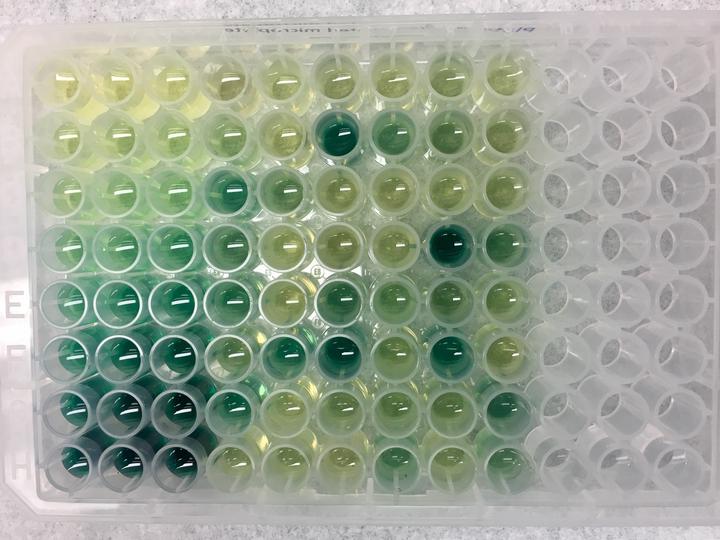Aedes aegypti blood and sugar-feeding
 Anthrone reacting with glycogen (sugar) from Aedes aegypti turns dark green.
Anthrone reacting with glycogen (sugar) from Aedes aegypti turns dark green.In the U.S., some studies suggest that improved housing quality (e.g. screened windows and doors) reduces exposure to Ae. aegypti biting; however, it unclear how household characteristics and human behaviors (e.g. air-conditioner usage) may modify feeding patterns. To better understand the relationships between household risk factors and Ae. aegypti biting, I identified bloodmeal hosts, quantified sugar-feeding prevalence, and identified disparities in human-Ae. Aegypti exposure and biting in LA. As part of this project, I developed a cheaper and more efficient assay to identify blood and sugar-feeding patterns in Ae. aegypti mosquitoes. The improved method I developed to detect blood and sugar-feeding in Ae. aegypti modifies the gold-standard anthrone anthrone and vanillin assays, which together quantify fructose, lipids, and glycogen in insects. My modifications require 1/3 of the time and 1/10 of the cost compared to the gold-standards. For this new protocol, I reduced and scaled the reagents required for the original assays to fit within 96-well microplates, which are used to read absorbance. To validate this new protocol, I tested it on two cohorts of lab mosquitoes with known feeding histories. I am now using this assay in conjunction with linear discriminant annalysis, a classification algorithm, to classify the adult Ae. aegypti I collected from LA households as having never taken a bloodmeal, likely taken one bloodmeal, or likely taken multiple bloodmeals. The publication is in preparation.